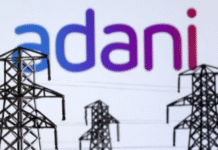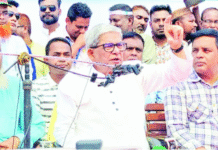Payra coal power plant takes off
The 1,320MW unit is the first large power plant to come into operation under AL govt; by 2030, total generation capacity to reach 40,000MW

Coal-fired Payra power plant in Patuakhali began test production yesterday, making it the first large-scale plant to come into operation since the Awami League swept to power a decade ago.
One hundred megawatt electricity generated by the plant in Kalapara upazila was added to the national grid at 11:05am, said AM Khurshedul Alam, the acting managing director of Bangladesh-China Power Company (BCPCL), which owns the plant.

“The supply will go up gradually,” said State Minister for Energy and Power Nasrul Hamid in his verified Facebook page after the first unit of the 1,320-MW plant went into production.
One of the mega projects of the AL-government, Payra power plant is the first in Bangladesh to run on imported coal. Now Indonesian coal is being used and later Australian coal would be used.
The plant would be fed sub-bituminous coal, a variety relatively inexpensive and less harmful to the environment.
The government has run ads in Germany, Singapore, and Indonesia for importing coal through competitive bidding.
Payra plant is the second coal-fired power plant in the country. The first one is the 250MW Barapukuria Power Station in Dinajpur, which uses local coal.
The plant is part of the government’s efforts to diversify energy amid depleting gas reserves and to feed the growing economy.
More coal power plants are on the way.
Rural Power Company and Chinese state-owned Norinco International Cooperation are going to build another 1,320MW coal-fired plant in the vicinity of Payra seaport.
About 60 percent work of the 1,320MW Rampal power plant in Rampal upazila of Bagerhat has been completed and is expected to start test run in December this year, according to officials.
These plants are at the heart of the government plan to produce 40,000MW electricity by 2030 when coal would produce 35 percent of the power from about 2 percent now.
The BCPCL acting MD said the Payra plant was built by a 50:50 joint venture between state-run North-West Power Generation Company Bangladesh and China National Machinery Import and Export Corporation.
Its construction began in 2016.
He said the total cost of the project was about $2 billion, with 80 percent coming from the Exim Bank of China.
At present, the cost of generating a kilowatt-hour of electricity is $0.070 to $0.075, but it would come down when the entire plant begins fully-fledged operation, he said.
Khurshedul Alam said the two units of the plant were capable of generating 660MW each. The unit that went into test production yesterday is expected to go for full-capacity production this month.
The second unit is also almost ready for production and will start to supply power to the national grid within four months.
The second unit would cost $200 million less than the first power plant, Khurshedul said.
Officials concerned had said the plant has been built using state-of-the-art ultra-supercritical technology, which has greater efficiency and lower emissions. It can fully capture bottom ash, fly ash, Sulphur and Nitrogen, all of which can harm the environment.
The dredging of the river channel adjacent to the Payra power plant would be complete within a couple of days, paving the way for ships capable of carrying around 30,000 tonnes coal to dock.
The Rampal project — being built by Bangladesh India Friendship Power Company (BIFPC), a joint partnership between India’s state-owned National Thermal Power Corporation and Bangladesh Power Development Board — has drawn flak for its location.
It is near the Sundarbans, the largest mangrove forest in the world and a world heritage site declared by Unesco in 1997.
Activists are concerned that the Rampal plant, which is less than 10 miles from the Sundarbans, would cause environmental degradation as it would require increased river traffic, dredging, and could pollute the air and water.









